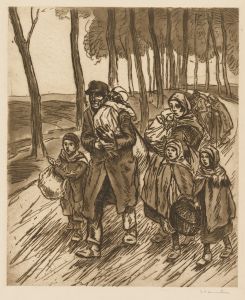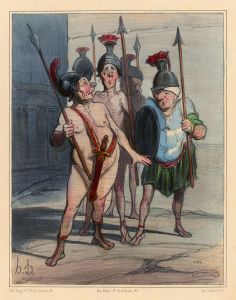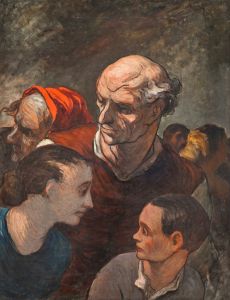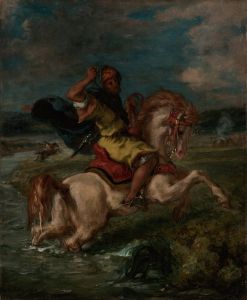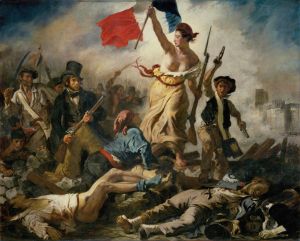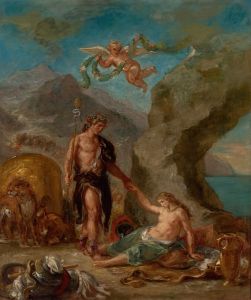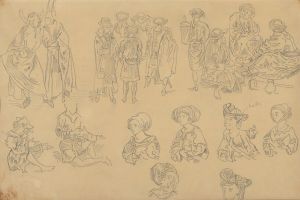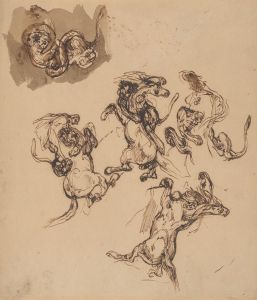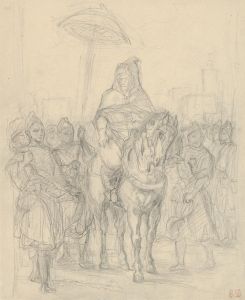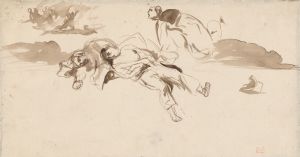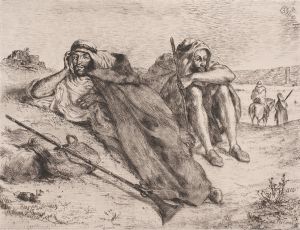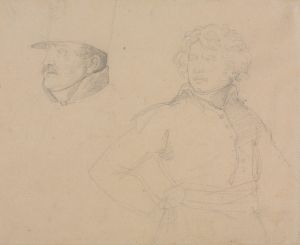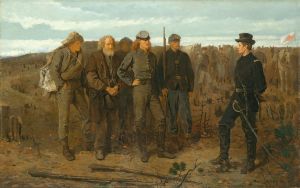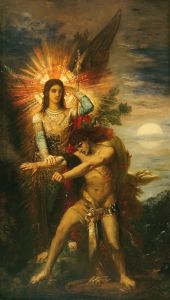
Battle Scene with a Prisoner Being Bound, after Raphael
A hand-painted replica of Eugène Delacroix’s masterpiece Battle Scene with a Prisoner Being Bound, after Raphael, meticulously crafted by professional artists to capture the true essence of the original. Each piece is created with museum-quality canvas and rare mineral pigments, carefully painted by experienced artists with delicate brushstrokes and rich, layered colors to perfectly recreate the texture of the original artwork. Unlike machine-printed reproductions, this hand-painted version brings the painting to life, infused with the artist’s emotions and skill in every stroke. Whether for personal collection or home decoration, it instantly elevates the artistic atmosphere of any space.
"Battle Scene with a Prisoner Being Bound, after Raphael" is a painting by the renowned French Romantic artist Eugène Delacroix. This work is a testament to Delacroix's admiration for the Italian Renaissance master Raphael and reflects his interest in historical and dramatic themes, which were central to his oeuvre.
Eugène Delacroix, born in 1798, was a leading figure in the Romantic movement, known for his expressive brushwork and vibrant use of color. His works often depicted scenes of drama, emotion, and exoticism, drawing inspiration from literature, history, and his travels. Delacroix's fascination with the works of past masters, particularly those of the Renaissance, is evident in several of his paintings, including "Battle Scene with a Prisoner Being Bound."
This particular painting is an interpretation of a composition by Raphael, showcasing Delacroix's ability to reinterpret classical themes through his unique Romantic lens. Raphael, an Italian painter and architect of the High Renaissance, was celebrated for his clarity of form and ease of composition. Delacroix's rendition captures the dynamic movement and emotional intensity characteristic of his style while paying homage to Raphael's original composition.
The painting depicts a chaotic battle scene, a common subject in Delacroix's work, where a prisoner is being bound amidst the turmoil. This scene allows Delacroix to explore themes of conflict, power, and human suffering, which are recurrent in his art. The composition is marked by vigorous brushstrokes and a dramatic use of light and shadow, enhancing the sense of movement and tension within the scene.
Delacroix's choice to draw inspiration from Raphael is significant, as it highlights the dialogue between Romanticism and the Renaissance. While Raphael's work is often associated with harmony and balance, Delacroix infuses the scene with a sense of immediacy and emotional depth, characteristic of the Romantic era's emphasis on individual expression and the sublime.
The painting also reflects Delacroix's broader artistic goals, which included the desire to evoke emotion and provoke thought through his art. By revisiting and reinterpreting historical and classical themes, Delacroix sought to connect the past with the present, offering viewers a new perspective on familiar subjects.
"Battle Scene with a Prisoner Being Bound, after Raphael" is an example of how Delacroix's work bridges the gap between different artistic periods, demonstrating his reverence for tradition while simultaneously pushing the boundaries of artistic expression. This painting, like many of Delacroix's works, continues to be studied for its technical mastery and its ability to convey complex human emotions through the medium of paint.
Overall, this painting is a reflection of Delacroix's enduring legacy as an artist who was deeply engaged with the art of the past, yet unafraid to innovate and express the tumultuous spirit of his own time.





